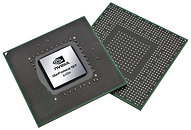- Joined
- Oct 9, 2007
- Messages
- 47,670 (7.43/day)
- Location
- Dublin, Ireland
| System Name | RBMK-1000 |
|---|---|
| Processor | AMD Ryzen 7 5700G |
| Motherboard | Gigabyte B550 AORUS Elite V2 |
| Cooling | DeepCool Gammax L240 V2 |
| Memory | 2x 16GB DDR4-3200 |
| Video Card(s) | Galax RTX 4070 Ti EX |
| Storage | Samsung 990 1TB |
| Display(s) | BenQ 1440p 60 Hz 27-inch |
| Case | Corsair Carbide 100R |
| Audio Device(s) | ASUS SupremeFX S1220A |
| Power Supply | Cooler Master MWE Gold 650W |
| Mouse | ASUS ROG Strix Impact |
| Keyboard | Gamdias Hermes E2 |
| Software | Windows 11 Pro |
NVIDIA, along with Qualcomm, is reportedly in talks with foundries other than TSMC, for manufacturing of its new 28 nm chips. Despite the fact that TSMC is ramping up its 28 nm capacity at a breakneck pace, NVIDIA is seeing a shortage of production that could affect its competitiveness. An interesting revelation here is that NVIDIA has begun sampling its GPUs on Samsung's 28 nanometer fab process. Samsung uses this process for contract-manufacturing of ARM application processors. Other foundries with proven 28 nm manufacturing capability include UMC.

View at TechPowerUp Main Site

View at TechPowerUp Main Site




 ) lead me to believe they have or are on the verge of making some serious headway in the graphics department.
) lead me to believe they have or are on the verge of making some serious headway in the graphics department.